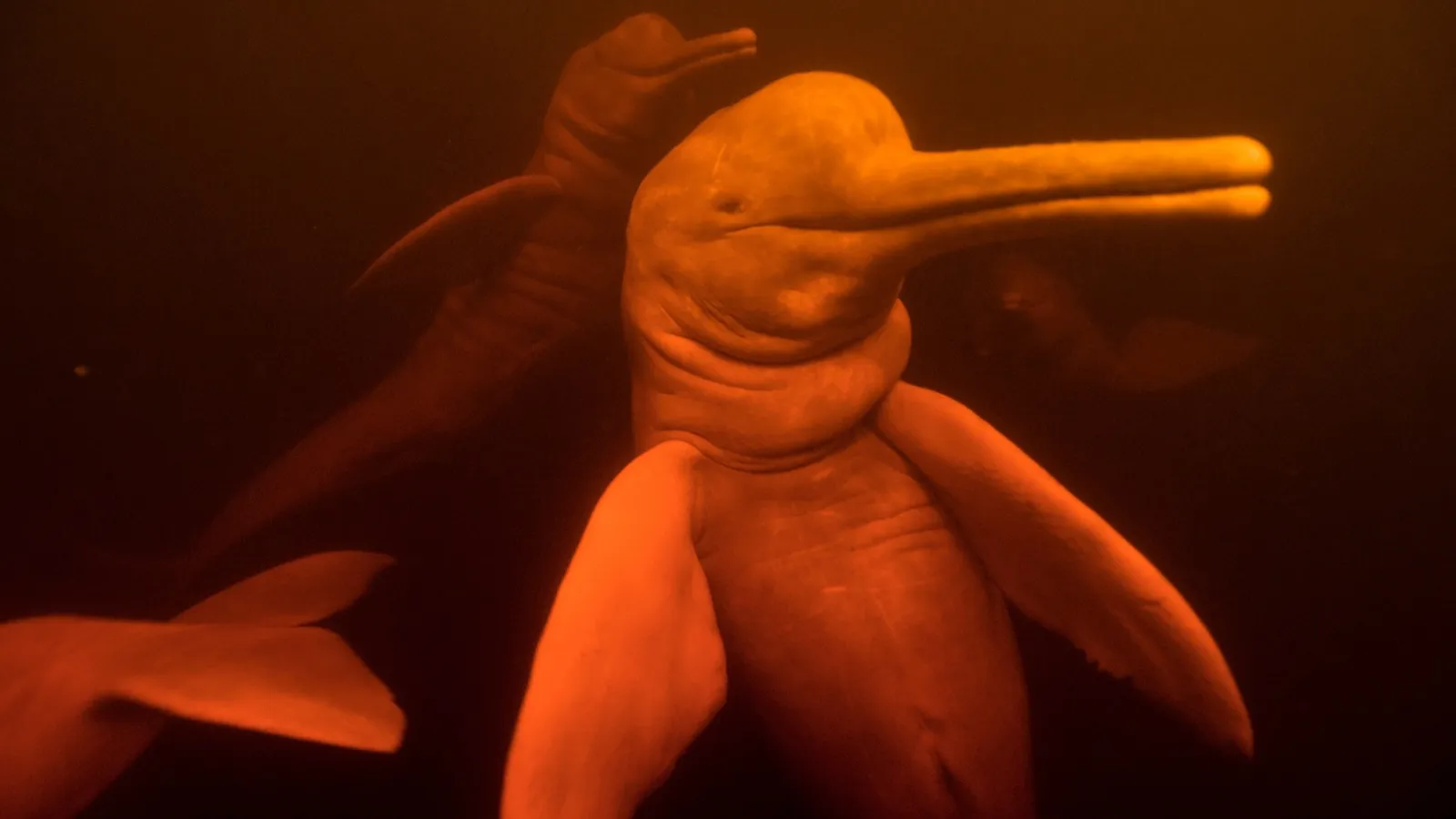
National Geographic, Feb 27 - A dolphin lazily rolls on its back, sticks its member out of the water, and shoots a jet of urine into the air that arcs across the sky like a yellow rainbow.
This strange behavior (called “aerial urination” by experts) has been observed in pink dolphins (Inia geoffrensis), also known as bottos. The practice has surprised and confused scientists.
Claryana Araújo-Wang, a researcher at the Botos do Cerrado Research Project in Brazil and the CetAsia Research Group in Canada, and her colleagues recently published a study on the peculiar phenomenon after observing the dolphins for 218.9 hours and watching the males shoot urine into the air 36 times.
“An individual slowly begins to turn belly up, exposes the penis, and urinates,” she explains in an email. “When another male is present, he may sometimes chase the urine jet with his snout.”
Jason Bruck, an associate professor at Stephen F. Austin State University in the United States who was not involved in the study, was aware of the phenomenon. A dolphin expert, he has been giving talks for years that include a slide with an image of the pink dolphin performing this practice. The frequency of the practice proven by the study places on a solid basis the conclusion that “it is not something isolated,” he assures.
The Functions of Urine in the Animal Kingdom
Many animals use urine for purposes beyond waste elimination. Lions, tigers, and bears, as well as wolves, coyotes, and mice, use it to mark their territory. Female crayfish, lobsters, and porcupines, for their part, let males know that they are ready to reproduce by urinating.
Male tilapia (a freshwater fish) use it to demonstrate their sexual prowess. What's more, monkeys bathe in urine in the hope that the scent will attract a mate.
However, while most animals can detect urine odors, evolution has caused dolphins to lose their sense of smell and rely on taste.
“Mammals chemically encode a lot of signals,” Bruck says. “Actually, we humans are the ones who have limited use of chemical communication… our sense of smell is pretty bad.”
So why are these dolphins urinating in the air?
Researchers aren't entirely sure what's going on with these pink dolphins, but they speculate that the practice may have a social purpose.
Botos typically use acoustic signals to communicate, but mating behaviors include displays of aggression between males and even the transportation of objects such as flotsam. “It's possible that aerial urination is another behavior in the males' social-sexual repertoire,” Araújo-Wang speculates.
In that sense, Araújo-Wang suggests that “aerial urination could help show masculine quality in terms of social position or physical condition.” So far, only male specimens have been observed doing this practice, and 67 percent of these events occurred when a “receiving” male was nearby.
Bruck, who published two studies in 2022 showing that bottlenose dolphins (Tursiops truncatus) can identify their friends by the taste of their urine, wonders whether this could indicate a chemical communication system between them. “Maybe botos can do the same thing we have observed in bottlenose dolphins,” suggests the expert.
At the moment, it is impossible to be sure. Dolphins could use chemical signals to indicate their identity, social status and physical health, or it could be “just a curious thing they do,” says Bruck. To confirm this, scientists would need to isolate different variables in controlled experiments. “That is something very difficult to do in this species,” he says.
Communication between pink dolphins and the danger of pollution.
The study’s authors believe this finding could be important for efforts to protect endangered botos, and Bruck agrees.
“It’s time to start acknowledging that there is strong evidence (of) chemical communication in cetaceans,” he says. “And this can be affected by the things we put in the water.”
If dolphins use chemical signals to communicate with each other, human pollution could block or mask these signals and affect the future of the species. If we are “pouring things into the water and they can’t figure out what they need to survive and reproduce, then that’s very bad,” Bruck emphasizes. (Text and Photo: National Geographic)